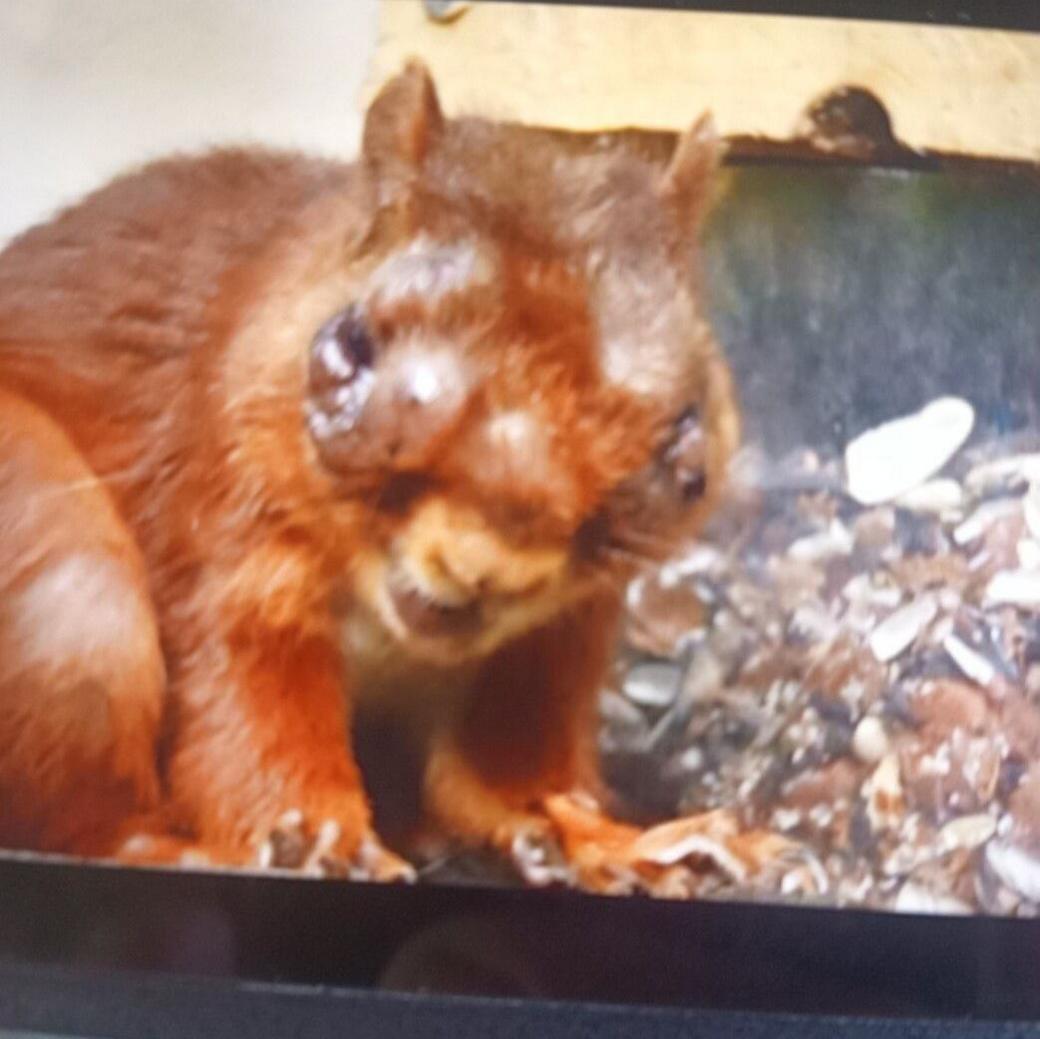'Relief' as squirrel's death not caused by pox

Red squirrels are popular with visitors to Wooler Common
- Published
Wildlife enthusiasts say they are relieved after a suspected case of squirrel pox was confirmed to be an alternative - although still fatal - disease.
A red squirrel was spotted at Wooler Common, in Northumberland, in late August with pox-like symptoms and died shortly after.
That led to fears the area's reds could be decimated by the illness, which causes skin ulcers and scabs, as well as swelling and discharge near the eyes, mouth, feet and genitalia.
However, a report by medical experts found the animal's cause of death was histiocytosis, "an unusual, tumour-like condition" which has so far only been recorded in a small number of red squirrels across the country.
Warning, this article contains a graphic image of a squirrel with histiocytosis
David Symons, of the Wooler Red Squirrel Group, had previously described the death as devastating, given pox "can kill a whole colony of reds in a woodland".
Responding to the findings of the government's Animal and Plant Health Authority, he said: "It's certainly a relief to us.
"It's welcome because it does not appear to be transmissible in the same way as the pox. That would run through a population very quickly.
"The longer it went without any more casualties, the more hopeful we got. It also provides information for other preservation groups and they will maybe look out for that [alongside pox]."

The diseased red squirrel was close to death when it was initially spotted
An inspection of the dead squirrel by veterinary investigation officers found it had lesions on the skin and in its lungs.
The organisation's final report said histiocytosis had been found in approximately nine other cases, predominantly from Cumbria, although also in Scotland.
The document added the disease was "relatively new" with "very little" known about it.
There may be an environmental cause or trigger, it suggested.
Follow BBC North East on X, external, Facebook, external, Nextdoor and Instagram, external.
Get in touch
Do you have a story suggestion for BBC Tyne?
Related topics
- Published2 September
